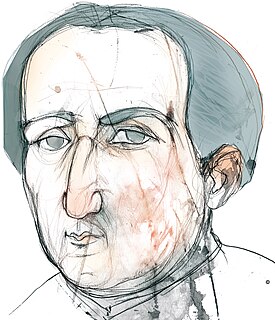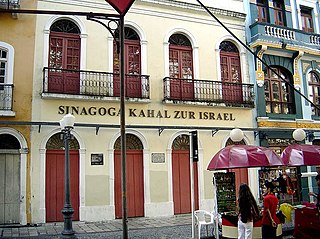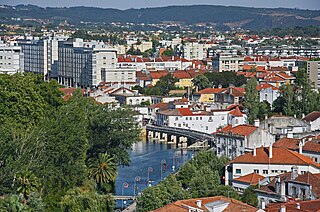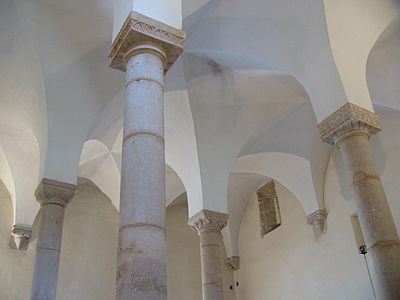
The history of the Jews in Belmonte, Portugal, reaches back over five hundred years.

Abraham Zacuto was a Spanish astronomer, astrologer, mathematician, rabbi and historian who served as Royal Astronomer to King John II of Portugal.
The year 1923 in archaeology involved some significant events.

The history of the Jews in Portugal reaches back over two thousand years and is directly related to Sephardi history, a Jewish ethnic division that represents communities that originated in the Iberian Peninsula.

Castelo de Vide is a municipality in Portugal, with a population of 3,407 inhabitants in 2011, in an area of 264.91 square kilometres (102.28 sq mi).

Novi Sad Synagogue is one of many cultural institutions in Novi Sad, Serbia, in the capital of Serbian the province of Vojvodina. Located on Jevrejska (Jewish) Street, in the city center, the synagogue has been recognized as a historic landmark. It served the local Neolog congregation.

The Synagogue of El Tránsito, also known as the Synagogue of Samuel ha-Levi or Halevi, is a historic synagogue, church, and Sephardic museum in Toledo, Spain. It was built as an annex of the palace of Samuel ha-Levi Abulafia, treasurer to King Peter of Castile, in 1357. The synagogue was converted into a church after the expulsion of the Jews from Spain in 1492. It was briefly used as military barracks during the Napoleonic Wars of the early 1800s. It became a museum in 1910. Today it is formally known as the Sephardi Museum. The building is known for its rich stucco decoration, its Mudejar style, and its women's gallery.

Kahal Zur Israel was a Jewish synagogue located at Rua do Bom Jesus number 197 in Recife, Brazil. It was established in 1636 by Portuguese and Spanish Sephardic Jews that had taken refuge in the Netherlands fleeing forced conversion and were joined by New Christians, who possibly helped to build the structure and were already living in the colony. It was the first synagogue erected in the Americas. The building is now a museum, including a Torah and bema as well as archeological excavations displaying various parts of the original synagogue, such as the mikveh.

The history of the Jews in Naples deals with the presence of Jews in the city of Naples, Italy. The Jewish presence in the city goes back at least 2,000 years. Today, the Jewish community in Naples numbers around 200 people.

The Great Synagogue of Florence or Tempio Maggiore is one of the largest synagogues in South-central Europe, situated in Florence, in Italy. The synagogue of Florence was one of the most important synagogues built in Europe in the age of the Jewish emancipation, reached by the Jewish communities living in the Grand Duchy of Tuscany in 1848.

The Lisbon Synagogue (formally, the Synagogue Shaaré Tikvah is a historical Portuguese synagogue situated in the civil parish of Santo António, in the municipality of Lisbon.
The history of the Jews in Munich, Germany, dates back to the beginning of the 13th century. An early written reference to a Jewish presence in Munich is dated 1229, when Abraham de Munichen acted as a witness to the sale of a house in Ratisbon.

Tomar, also known in English as Thomar, is a city and a municipality in the Santarém district of Portugal. The town proper has a population of about 20,000. The municipality population in 2011 was 40,677, in an area of 351.20 km2 (135.60 sq mi).

The Great Synagogue of Iași is the oldest surviving synagogue in Romania, located in Iași. It is listed in the National Register of Historic Monuments.

The history of the Jews in Florence can be traced over nine hundred years. Florence is the capital city of the Italian region of Tuscany and of the province of Florence. The Jews of Florence have one of the oldest continuous Jewish communities in Europe. The historic Jewish community in Florence is one of the largest and one of the most influential Jewish communities in Italy. The Jewish community in Florence also serves the smaller neighboring Jewish communities in Pisa, Livorno, and Siena.

The Kadoorie Mekor Haim Synagogue is a synagogue of the Jewish community of Porto, situated in the civil parish of Lordelo do Ouro e Massarelos, the municipality of Porto, in the Portuguese northern district of Porto. Constructed along the Rua Guerra Junqueiro beginning in 1929 and inaugurated in 1938, it is the largest synagogue in the Iberian Peninsula.

On 5 December 1496, King Manuel I of Portugal signed the decree of expulsion of Jews and Muslims to take effect by the end of October of the next year.

The Isaac Ben Walid Synagogue is a synagogue in the mellah of Tetuan, Morocco.

The Synagogue of Castelo de Vide is a well-preserved medieval synagogue in Santa Maria da Devesa, Castelo de Vide, Portugal. Along with the Synagogue of Tomar, it is one of two existing pre-expulsion synagogues in the country. Built in the late 14th century, it now houses a museum dedicated to Castelo de Vide's historical Jewish community.
Samuel Schwarz, or Samuel Szwarc, was a Polish-Portuguese Jewish mining engineer, archaeologist, and historian of the Jewish diaspora, specifically of the Sephardic and crypto-Jewish communities of Portugal and Spain. He is known for his rediscovery of the Jews of Belmonte, Portugal, and restoration of the Synagogue of Tomar.


















